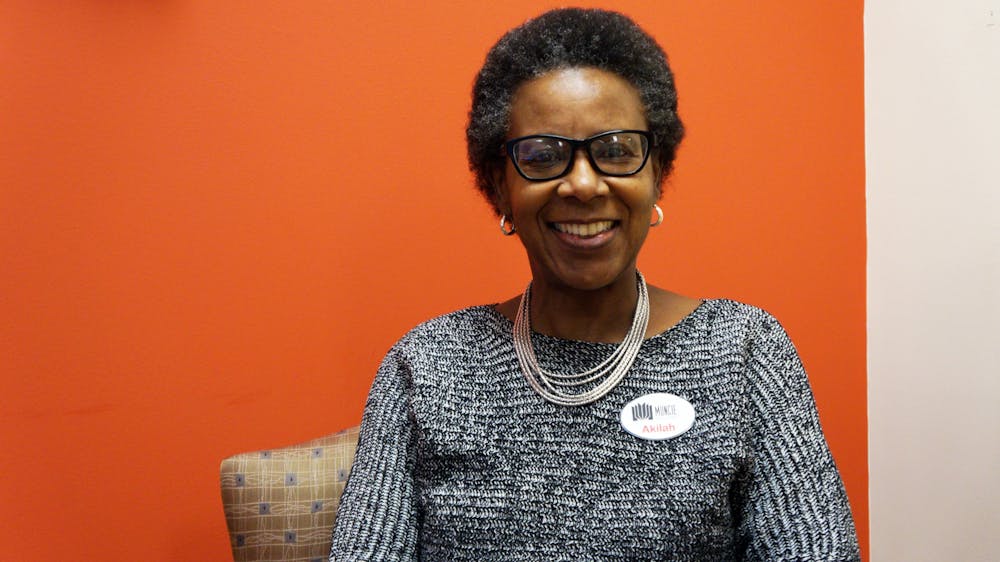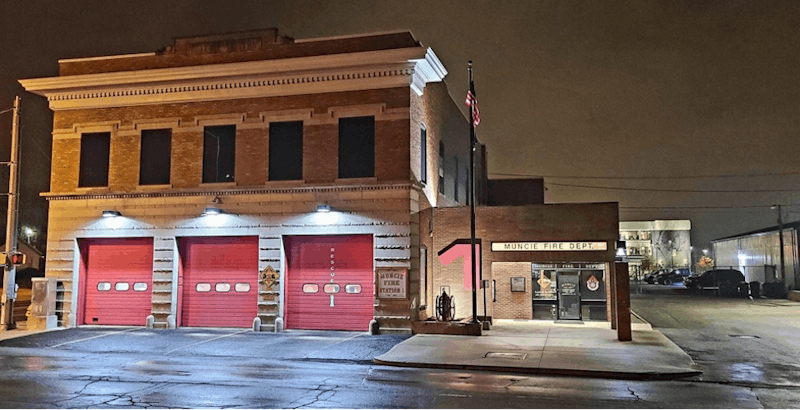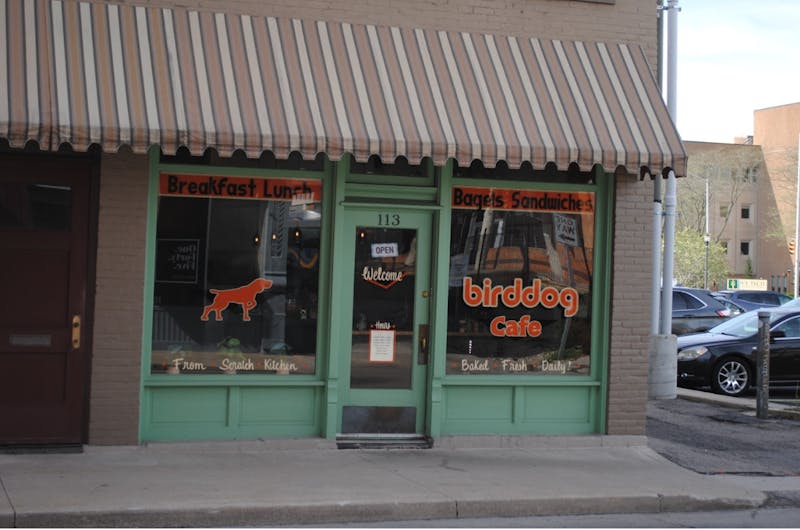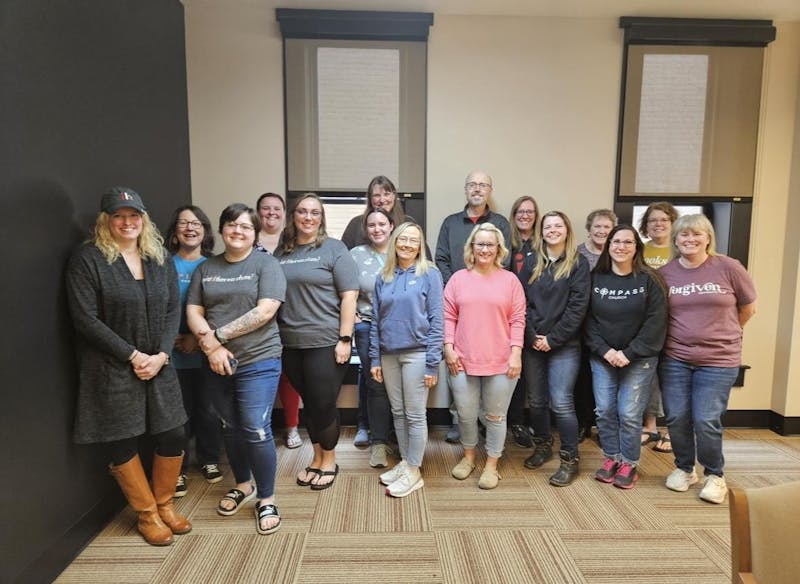Akilah Nosakhere has spent her life collaborating with inspiring individuals and organizations to advance her community and educational opportunities for all.
And come March, after more than 30 years of library management and community service, Nosakhere will retire as director of Muncie Public Library. “I want my staff and others to remember that I provided opportunities for professional and personal growth. That I reminded them the world is big and round, so get out in it.”
Nosakhere said she plans to remain in Muncie and do what she has always done — grow — with hopes to explore her artistic side, dedicate more time to her garden, and revisit some of her favorite books, including “Their Eyes Were Watching God” by Zora Neale Hurston.
She will remain on some local boards, including the Muncie Arts and Culture Council, which is working to support mural art throughout the community: “Life is about change,” she said. “When we stop growing, we become rigid, lose our creativity and our way of living.”
Nosakhere’s perspective on retirement reflects her favorite quote, from a song by blues musician, Keb’ Mo’: "There's more than one way home, ain't no right way, ain't no wrong, whatever path you might be on, find your own way, there's more than one.”
Nearing her last day at the office, Nosakhere reflects on her way home and her hopes for Muncie, libraries and equal opportunity.
Growing up in Muncie
Nosakhere was born in the Mississippi Delta but moved to Muncie when she was 8. Her mother’s older sister had married “a military man from Muncie” and moved to Central Indiana. Nosakhere said her mother, wanting to be close to her sister, packed up her four kids and moved to Muncie, where the single mother later had a fifth child with her second husband.
Her mother worked in a nursing home in the Industry neighborhood and went on to become a licensed practical nurse. Nosakhere said she looked up to her mom for her dedication to family, work ethic and imaginative, creative nature. Growing up in a home with artistic values, Nosakhere developed a love for books.
“I remember having a little ‘Bambi’ book, and then I remember cutting out the pictures later to create our own stories. I remember I was with my cousin, Joyce. She and I love to read,” said Nosakhere, who recalled that “Bambi” and “Charlotte’s Web” were her favorite books as a child.
As a high school student at Burris Laboratory School, Noskahere served on the yearbook staff and contributed to the school’s newsletter. She worked at libraries throughout graduate school.
“I was always in the library. And, as a work study student, I helped move everything out of the old library and all the new stuff back into the new bracket,” she said. “I remember the old library, I remember all of that, and everywhere I went, I worked in the library.”
An unexpected education
Nosakhere attended Ball State University to study U.S. history and social studies education from 1974-75, but it didn’t go as planned: “I played cards in the food center most of the time, and I didn’t do my homework,” she laughed. “I flunked out.”
She spent the following summer with her cousins in Decatur, Illinois, where they convinced her to attend Western Illinois University with them. From 1976-79, she studied African-American studies and journalism and reported for the Western Courier student newspaper. She also worked as a resident assistant and a library worker at the Gwendolyn Brooks Cultural Center.
At the start of her senior year at WIU, she had to get her appendix removed. Her mother moved Nosakhere back to Muncie, where she transferred to Ball State. But the university didn’t have an African-American studies program, so few of her credits transferred. She shifted her focus to education and graduated from Ball State with a master’s degree in secondary education in 1984.
After she graduated, she took a job with Muncie Public Library to develop databases for social services. The job was tied to a yearlong grant; Once it ended, she focused on preparing to farm across the globe with her first husband in the Peace Corps.
Writing an impactful career
But Nosakhere took an agricultural trip to West Africa in preparation for her life in world agriculture and returned to news that her husband wanted to enter the United Methodist ministry instead of the Peace Corps. She was disappointed but supportive of their move to Atlanta for him to attend the International Theological Seminary at the Atlanta University Center in Georgia. Nosakhere worked at the Atlanta University Center Robert W. Woodruff Library in the Government Documents Department where she again fell in love with books.
“My supervisor acknowledged the extra effort I was putting into helping students with their projects and papers, so she recommended I apply for a full-ride scholarship to the Clark Atlanta University Library school,” Nosakhere recalled. “I was accepted into the program in 1986 and graduated with a master's in library science (with a focus on academic and special library administration) in 1987.”
While Nosakhere was pursuing her MLS, she worked at public libraries part-time on the weekend and as part of her work program, she worked for a Georgia Power corporate library until they decided to condense the databases.
She took an internship with the Library of Congress in Washington, D.C., before returning to Atlanta where she worked as an information manager for NAC International, a provider of nuclear fuel cycle technology reports. She missed working with students in academic libraries, so in July 1992, Nosakhere became the head of the library circulation department for Georgia Perimeter College in Decatur, Georgia. She also taught information literacy skills to business students part-time for Shorter University metro Atlanta campuses.
In February 1995, she moved to Georgia State University in Atlanta to begin her role as subject liaison librarian and later head of collections at Georgia State University. She held that role until April 2002, when she was named the special collections librarian at Atlanta University Center Consortium.

Finding lasting, collaborative love
“It was during this time I met my second husband, Charles Freeman, at a reparations conference in Washington, D.C. We were long distance for a while. He was an artist/organizer out in California while I was a librarian/organizer in the South. We would discuss art and read books to each other over the phone, you know, before cell phones,” she reminisced. “One of our favorite picks was one he chose, “The Quest of Ruru: A Tale of Ancient India,” classic tale of adventure for young boys about growing up and becoming cognizant and spiritually aware. We loved reading together. There is something so magical about reading out loud to another human.”
The couple married July 2, 2005, in Atlanta and partnered to bring several projects to libraries, including a Black Panther photo exhibit to the Auburn Avenue Research Library where she worked as Head of Reference and Research at the time. In 2009, they decided to leave the big city behind for scenic southeastern New Mexico.
An expert in Africana collections
That fall, she moved to New Mexico State University in Carlsbad, where she served as director of library services and an associate professor. Throughout her career, she pursued her interest in Africana world studies and became an expert in Africana collections — coming full-circle to her African-American studies after high school.
Her research in this area led her to co-author “The 21st Century Black Librarian in America: Issues and Challenges (2012),” which is a collection of 48 essays that address emerging concerns among Black librarians. Educators, graduate students, librarians and library advocates weigh in topics from poorly equipped school libraries to innovative models of public education.
“It’s a seminal series started by one of the first Black librarians, E. J. Josey, and it was an honor to be part of the second iteration of the text. My focus was on giving credibility to the profession and creating a space where diverse voices can discuss its challenges and opportunities.”
Andrew Jackson co-edited the book with Nosakhere and Julius Jefferson, former president of the American Library Association. Jackson, the retired executive director at Queens Library’s Langston Hughes Community Library, said he enjoyed collaborating with Nosakhere to identify essays from diverse perspectives.
“Working with her was a pure joy and honor, with our book receiving the BCALA (XXXX) Literary Citation in Publishing Award in 2013 as well as five excellent reviews,” said Jackson, also a retired library director. “Akilah is sharp, on point and focused. I am proud to call her a colleague and friend.”
Nosakhere has continued to share her lessons and expertise in a variety of publications, including “Where Are All the Librarians of Color? The Experiences of People of Color in Academia.” Her essay in the book details working at a library, where she “re-built the library and didn’t get a drop of thanks from the male-dominated administration,” she said. “As an African American, I get no respect. As a woman, I get no respect. As a librarian, ditto.”
Returning to Muncie
Her professional accolades and doctoral work at New Mexico State University Las Cruces took a backseat when Charles had a stroke in August 2015. The following spring she got a call that her mother was ill and her family needed her back in Muncie to help care for her. After much thought and tears, she left New Mexico and returned to Muncie to care for both her husband and her mother.
“He was no longer painting, no longer doing his murals, and I was his caretaker,” she said. “It was a difficult time. I dropped my Ph.D. program and just needed to regroup the family and go from there.”
In 2017, Nosakhere moved to Muncie and accepted the role as director of Muncie Public Library. Her office in the Maring-Hunt branch is where she once learned science when the building was Wilson Middle School.
She loves that the library was once a school. It reiterates the ties libraries have with education: “We’re teaching others to build literature and information management of how to find it, evaluate it and use it to your advantage. Librarians are the unsung heroes of education.”
And to people who say they need or use libraries, Nosakhere has this to say:
“You carry a library in your pocket whether you realize it or not because the phone is a library. And your earphones attach you to the information. You get caught up in the format. It's not the format, it's the information. And if you're not changing your databases regularly, you'll get stale. So you say we don't need libraries, okay, you're stale because growth and change is a natural thing. And when you stop growing, you start dying. And when a library dies, we're all in trouble.”
And physical libraries are important, too, she added: “Many people who have nowhere to go, come to libraries. Kids come to libraries to connect and access information they might not be able to get elsewhere. We have games you can check out and teach seniors about technology. I could go on.”
“Libraries are a safe, positive space, and we don’t have as many of those in our world today. The younger generation of librarians is innovative, and I can’t wait to see how they continue to evolve and grow what we offer.”
A new, creative creation
When Nosakhere leaves, she will take her husband’s artwork with her. The two decorated Maring-Hunt’s walls with many of his pieces, including 16, 4-foot circles displayed down a long hallway. The pieces represent crop circles, which are studied and sacred in every culture. The art reminds her of the cyclical nature of life and the similarities we share across cultures and times. She recently bought a building on Martin Luther King Jr. Boulevard to “store all this art,” she laughed. Nosakhere estimates the art should be visible by the end of the summer, and she wants to continue to support other mural artists, in honor of her husband.
“I had no intention of buying a building, but I needed the space to display Charles’ work and explore connecting people through art and books. You could say that I’m going back to cutting out pictures of children’s books to create my own expressions and stories,” she said. “This building is another creation of my life, and I'm looking forward to developing it and making a living-learning space for intergenerational interaction. That's what the rest of my life will be, you know, art and old people and young people, everybody working together, and this one big circle, working together and supporting each other.”
Nosakhere is excited for what’s next, but the future is bittersweet. One of the many projects she is working on is the story of her husband’s life and their life together after he passed away in 2020, after 16 years of marriage.
“I'm writing his biography, but you know how painful that can be. You're going through all your paperwork and pictures and, you know, memory lane. It's been a hard process, but I'm getting stronger all the time.”
Learn more about Muncie Public Library and its various branches and resources, both online and in-person.





The Daily News welcomes thoughtful discussion on all of our stories, but please keep comments civil and on-topic. Read our full guidelines here.